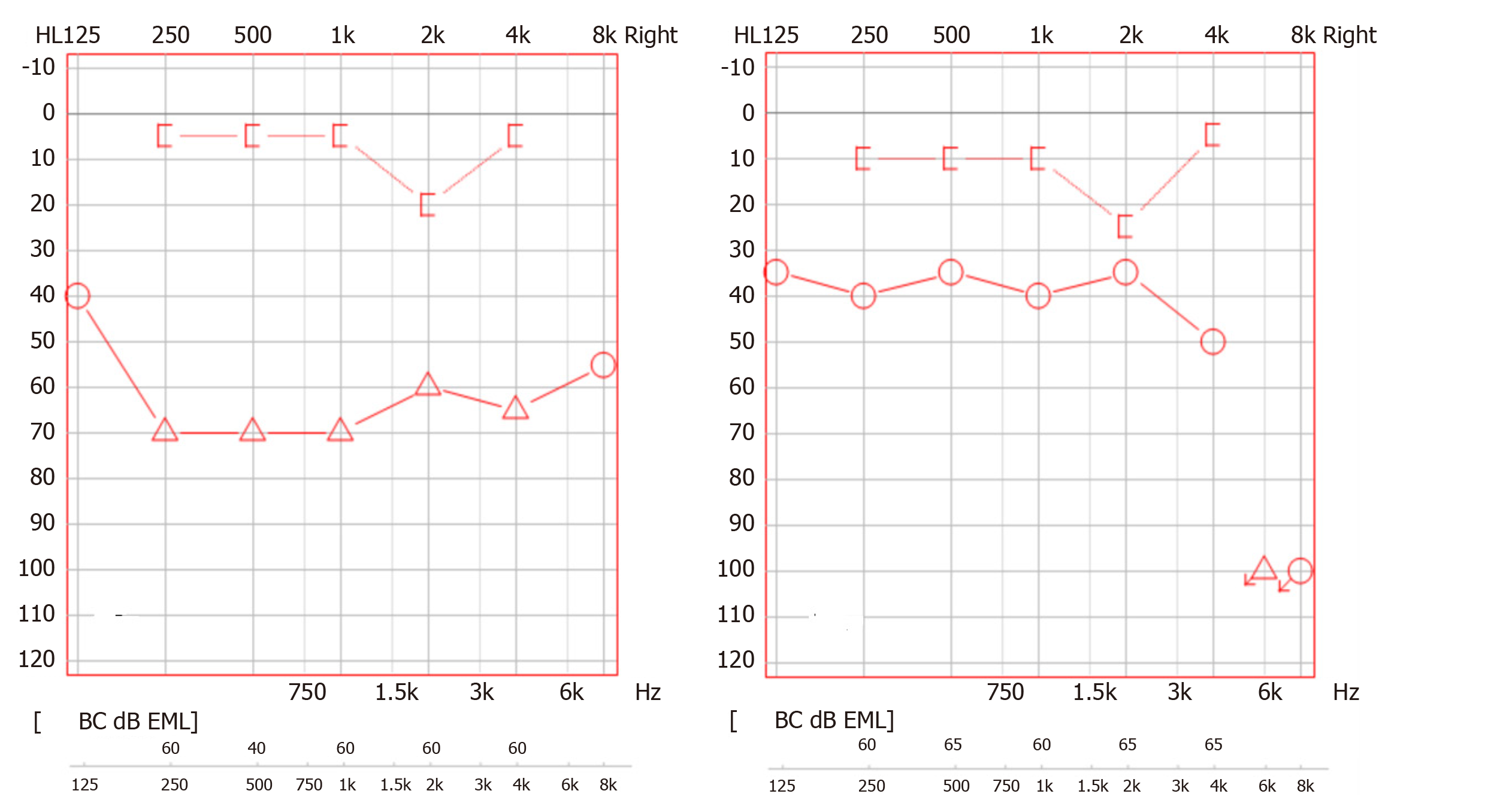Copyright
©The Author(s) 2020.
World J Clin Cases. Aug 26, 2020; 8(16): 3616-3620
Published online Aug 26, 2020. doi: 10.12998/wjcc.v8.i16.3616
Published online Aug 26, 2020. doi: 10.12998/wjcc.v8.i16.3616
Figure 1 Temporal bone computed tomography findings.
A: The first branchial cleft cyst; B: The white arrow indicates the lesion tightly adhered to the facial nerve; C: The orange arrow indicates that the incus is fused with the lateral bony plank.
Figure 2 Intraoperative findings and surgical strategy.
A: The lesion; B: The white arrow indicates the fusion of the malleus head and incus body, the black arrow indicates that the malleus handle was fused to the lateral bony plank, the yellow arrow shows the origin of the lesion; C: The white arrow indicates the hearing reconstruction with a partial ossicular replacement prosthesis and tragus cartilage graft, the black arrow shows the location variation of the facial nerve, which migrated to the anteposition. a: The lesion; b: The atretic bony plank outside the closed tympanic cavity. In: Incus; MH: Malleus head; PG: Parotid gland; FN (t): Tympanic segment of the facial nerve; FN (v): Vertical segment of the facial nerve; LSC: Lateral semicircular canal; St: Stapes; ET: Eustachian tube.
Figure 3 Comparison of preoperative and postoperative pure tone audiometry in the right ear.
A: Shows the preoperative pure tone audiometry, the preoperative air-bone conduction gap was 56 decibels; B: Shows postoperative pure tone audiometry, the postoperative air-bone gap was 21 decibels, and the pure-tone average gain was 35 decibels.
- Citation: Zhang CL, Li CL, Chen HQ, Sun Q, Liu ZH. First branchial cleft cyst accompanied by external auditory canal atresia and middle ear malformation: A case report. World J Clin Cases 2020; 8(16): 3616-3620
- URL: https://www.wjgnet.com/2307-8960/full/v8/i16/3616.htm
- DOI: https://dx.doi.org/10.12998/wjcc.v8.i16.3616











